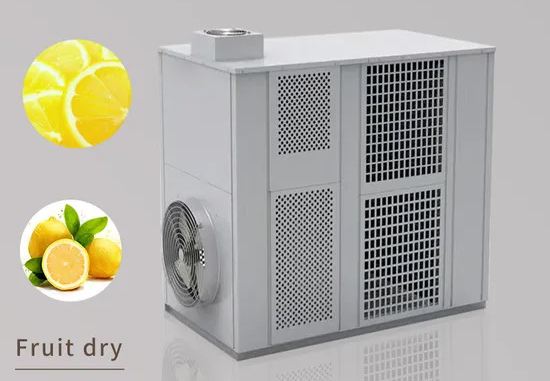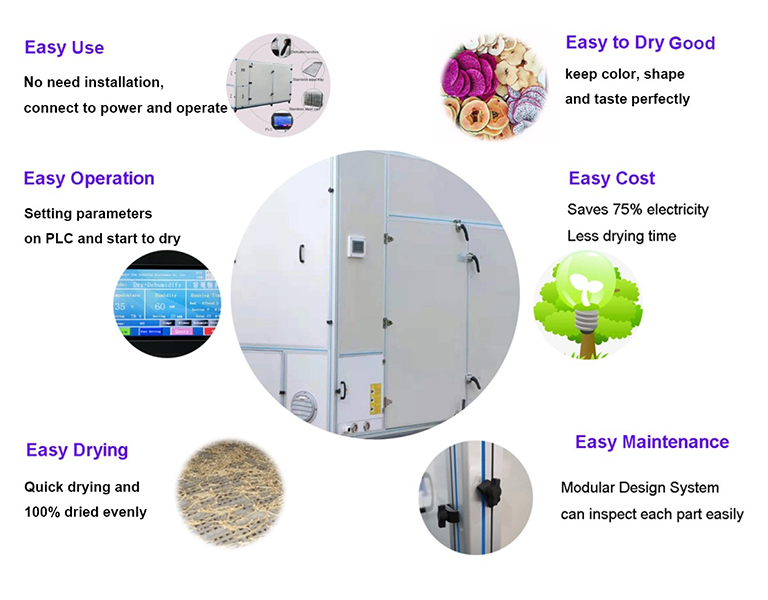
Content Menu
● Understanding Power Consumption
>> Average Power Usage
>> Calculating Energy Costs
● Factors Influencing Energy Consumption
>> 1. Size and Capacity
>> 2. Temperature Settings
>> 3. Duration of Use
● Tips for Optimizing Energy Usage
● Benefits of Using a Food Dehydrator
>> 1. Nutritional Retention
>> 2. Cost Savings
>> 3. Versatility in Food Preparation
>> 4. Flavor Enhancement
● Common Foods Suitable for Dehydration
● Expanding the Article Further
● Advanced Insights into Food Dehydration Technology
>> 1. Types of Food Dehydrators
>> 2. User Experiences with Different Models
● Environmental Impact of Food Dehydration
>> 1. Reducing Food Waste
>> 2. Energy Efficiency Compared to Other Methods
● Maintenance Tips for Longevity
>> 1. Regular Cleaning
>> 2. Checking Seals & Gaskets
● Conclusion
● FAQ
>> 1. How much does it cost to run a food dehydrator for a month?
>> 2. Can I use a food dehydrator in winter?
>> 3. Is it cheaper to dehydrate food at home than buying pre-dried foods?
>> 4. Do all food dehydrators have similar power ratings?
>> 5. Can I run my dehydrator overnight?
● Citations:
Food dehydrators have gained immense popularity for their ability to preserve food by removing moisture, thus extending shelf life and reducing waste. As a manufacturer of food dehydrators, it is essential to understand the energy consumption of these appliances, especially when providing OEM services to international brands. This article will explore how much power food dehydrators use, factors affecting their energy consumption, and tips for optimizing usage.

Understanding Power Consumption
Average Power Usage
Most food dehydrators consume between 300 to 1000 watts per hour, depending on their size and model. For instance, a standard dehydrator might use around 600 watts, while larger models can reach up to 1200 watts during peak operation.
- Small Dehydrators: Typically consume around 300-600 watts.
- Medium Dehydrators: Usually range from 600-800 watts.
- Large Dehydrators: Can consume between 800-1200 watts.
This power consumption is relatively moderate compared to other kitchen appliances like ovens or microwaves, which can use significantly more energy.
Calculating Energy Costs
To calculate the cost of running a food dehydrator, you can use the following formula:
Cost of Energy in dollars = Power Consumption in kW x Hours Used x Cost per kWh
For example, if a dehydrator uses 600 watts (0.6 kW) and runs for 12 hours, with an electricity cost of $0.12 per kWh, the calculation would be:
Cost = 0.6 kW x 12 hours x 0.12 USD/kWh = 0.864 USD
This means running the dehydrator for 12 hours would cost approximately $0.86.
Factors Influencing Energy Consumption
Several factors can affect how much power a food dehydrator uses:
1. Size and Capacity
Larger dehydrators often require more energy to maintain airflow and temperature across multiple trays. However, they can be more efficient than running several smaller units for the same amount of food.
2. Temperature Settings
The temperature at which you operate your dehydrator significantly impacts energy usage. Higher temperatures generally lead to increased power consumption. Most dehydrators operate effectively between 125°F to 160°F (52°C to 71°C).
3. Duration of Use
Dehydration is a time-consuming process that may take several hours or even days depending on the type of food being dried. The longer the appliance runs, the higher the total energy consumption.

Tips for Optimizing Energy Usage
To minimize electricity costs while using a food dehydrator, consider the following strategies:
- Efficient Loading: Avoid overcrowding trays to ensure proper airflow and even drying.
- Use Timers: If your model has a timer feature, use it to automatically shut off the dehydrator after the required drying time.
- Batch Processing: Dehydrate larger quantities at once rather than multiple small batches to save on energy.
- Off-Peak Hours: Run your dehydrator during off-peak electricity hours when rates may be lower.
Benefits of Using a Food Dehydrator
Using a food dehydrator offers numerous advantages beyond just preserving food:
1. Nutritional Retention
Dehydrating foods helps retain their nutritional value. Unlike some cooking methods that can destroy vitamins and minerals, dehydration preserves most nutrients while removing moisture.
2. Cost Savings
By purchasing seasonal produce in bulk and dehydrating it yourself, you can save money compared to buying pre-packaged dried foods. This method also reduces food waste by allowing you to preserve excess fruits and vegetables before they spoil.
3. Versatility in Food Preparation
Dehydrated foods can be used in various recipes, from snacks like fruit leathers and jerky to ingredients in soups and casseroles. They are lightweight and easy to store, making them perfect for camping or hiking trips where space is limited.
4. Flavor Enhancement
Dehydration intensifies flavors in foods, making them taste richer and more concentrated. For example, dried tomatoes or mushrooms can add a burst of flavor to dishes that fresh versions may not provide.
Common Foods Suitable for Dehydration
Almost any food can be dehydrated; however, some are particularly well-suited for this preservation method:
- Fruits: Apples, bananas, berries, and mangoes are popular choices due to their natural sweetness.
- Vegetables: Carrots, bell peppers, zucchini, and tomatoes retain their flavor well when dried.
- Herbs: Basil, oregano, thyme, and parsley can be easily dried for long-term storage.
- Meats: Jerky made from beef or turkey is a favorite among outdoor enthusiasts.
Expanding the Article Further
To reach the target word count of over 1800 words while maintaining relevance and coherence in the content regarding "How Much Power Does A Food Dehydrator Use?", we will delve deeper into several aspects related to food dehydration technology, its environmental impact, user experiences with different models, maintenance tips for longevity of appliances, and comparisons with other preservation methods such as freezing or canning.
Advanced Insights into Food Dehydration Technology
Food dehydration technology has evolved significantly over recent years with advancements in design and functionality:
1. Types of Food Dehydrators
There are primarily three types of food dehydrators available on the market:
- Stackable Tray Dehydrators: These are compact units where trays stack on top of each other; they are typically less expensive but may require more frequent monitoring during operation due to uneven heat distribution.
- Shelf Dehydrators: These units have shelves that slide out like an oven; they provide better airflow and consistent drying but tend to be larger and more expensive.
- Hybrid Dehydrators: Combining features from both stackable tray and shelf models with additional functionalities such as convection heating or built-in timers for enhanced efficiency.
Each type has its pros and cons depending on user needs—whether it's space-saving designs for small kitchens or larger capacities for bulk dehydration tasks.
2. User Experiences with Different Models
User reviews often highlight specific features that enhance usability:
- Many users appreciate models with adjustable temperature settings that allow them to customize drying conditions based on different types of foods being processed.
- Built-in timers are frequently mentioned as essential features that prevent over-drying while conserving energy by shutting off automatically after set durations.
- Noise levels vary between models; some users prefer quieter units especially if they plan to operate them overnight or during family gatherings.
Understanding user experiences helps potential buyers make informed decisions based on real-world applications rather than just specifications alone.
Environmental Impact of Food Dehydration
Using food dehydrators contributes positively towards sustainability efforts:
1. Reducing Food Waste
By extending shelf life through dehydration processes—fruits that might otherwise spoil quickly can be preserved into healthy snacks or ingredients for future meals—thus reducing overall waste generated from spoiled produce in landfills which contributes significantly towards greenhouse gas emissions when decomposing.
2. Energy Efficiency Compared to Other Methods
When comparing energy usage with other preservation methods like freezing—where constant energy is required throughout storage—dehydrating provides an efficient alternative since once dried properly—foods require minimal ongoing energy input if stored correctly (e.g., vacuum-sealed).
Maintenance Tips for Longevity
Proper maintenance ensures your investment lasts longer while optimizing performance:
1. Regular Cleaning
After each use—remove all trays—wash with warm soapy water ensuring no residue remains; this prevents cross-contamination between batches while promoting hygienic practices necessary when handling raw foods such as meats or fish which may carry bacteria if not cleaned thoroughly post-use.
2. Checking Seals & Gaskets
Inspecting seals regularly ensures no air leaks occur during operation—this maintains optimal airflow required for effective dehydration processes thus improving overall efficiency leading towards reduced energy costs over time spent running appliances unnecessarily due faulty seals/gaskets allowing moisture back into unit prematurely halting desired results achieved through initial drying efforts undertaken earlier on!
Conclusion
Understanding how much power a food dehydrator uses is crucial for both manufacturers and consumers aiming to optimize energy efficiency and reduce costs. With average consumption ranging from 300 to 1000 watts, users can calculate their energy expenses based on their specific usage patterns and local electricity rates. By implementing efficient practices such as proper loading and utilizing timers, users can enjoy the benefits of food dehydration without incurring high energy bills.

FAQ
1. How much does it cost to run a food dehydrator for a month?
Running a food dehydrator for 8 hours daily at 600 watts would cost approximately $$0.6 \times 8 \times 30 \times 0.12 = \$14.40$$ per month.
2. Can I use a food dehydrator in winter?
Yes, you can use a food dehydrator in winter; however, consider placing it in a warmer room or near heat sources for better efficiency.
3. Is it cheaper to dehydrate food at home than buying pre-dried foods?
Yes, using a food dehydrator at home is generally cheaper than purchasing commercially dried foods over time.
4. Do all food dehydrators have similar power ratings?
No, power ratings vary significantly among different models and brands; always check the specifications before purchasing.
5. Can I run my dehydrator overnight?
Yes, many users run their dehydrators overnight; just ensure that it has an automatic shut-off feature or timer for safety.
Citations:
[1] https://www.aimheatpump.com/a-news-does-a-food-dehydrator-use-a-lot-of-electricity
[2] https://www.slashplan.com/food-dehydrator-energy-calculator-cost-and-kwh-usage/
[3] https://www.webstaurantstore.com/guide/741/food-dehydrators-buying-guide.html
[4] https://www.vevor.com/diy-ideas/do-dehydrators-use-a-lot-of-electricity/
[5] https://www.linkedin.com/pulse/impact-dehydrator-usage-your-electricity-bills-dehydrated-foodz-xkdxe
[6] https://www.webmd.com/diet/dehydrating-food-good-for-you
[7] https://www.dryitcanit.com/post/the-lowdown-on-the-cost-of-running-a-food-dehydrator
[8] https://vocal.media/feast/are-food-dehydrators-expensive-to-run
[9] https://www.bestbuy.com/discover-learn/10-reasons-to-buy-a-food-dehydrator/pcmcat1634332391134
[10] https://brodandtaylor.com/pages/dehydrating











